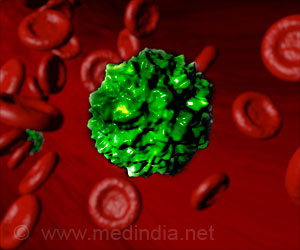In this study, researchers first developed a new animal model where they could look at the stem-like T cells in tumors over the course of several months of tumor growth, and determine how the stem-like T cells survive. They discovered the stem-like T cells do not persist in the tumor for very long, which meant they are resupplied from somewhere else in the body.
‘Targeting T cells, which are a type of white blood cells, with immunotherapy drugs could increase the number of cancer patients that respond to treatment.’
Nearby lymph nodes, an immune organ containing many of these stem-like T cells, were replenishing the supply. Every so often, a few stem-like T cells leave the lymph node and travel to the tumor. This keeps the tumor supplied with fresh cancer fighting T cells. Researchers believe this is important for slowing the growth of cancer. An analysis of immune cells isolated from patients with lung cancer confirmed that stem-like T cells are in lymph nodes near the lung.
“T cells in tumors become exhausted, but our study results show the stem-like T cells within the nearby lymph nodes do not experience exhaustion during the course of disease,” said Kelli A. Connolly, a post-doctoral fellow at Yale Cancer Center and lead author of the study. “This could be an important treatment advance as the potential to respond to immunotherapy is preserved.”
“We are focused on developing therapies that will activate the stem-like T cells in the nearby lymph node and bring them into the fight against cancer,” adds Joshi. “We plan to continue this work and focus on how to improve these therapeutic responses to help patients.”
Source: Eurekalert



